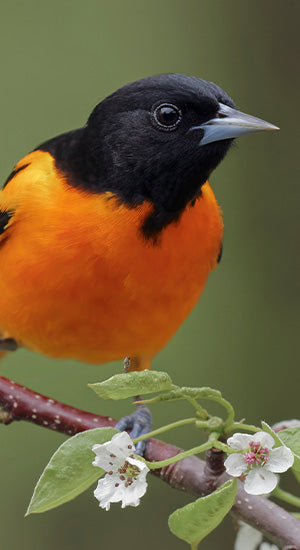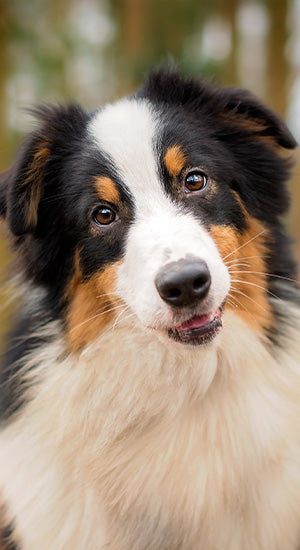
Spring has sprung! That means it’s time to make sure you’ve completed everything on your bird’s spring checklist. Not sure what to put on that checklist? No worries, we’ve got you covered! We've also attached a PDF file if you want to print this list out for yourself! :)
Grooming:
The most important thing on this list is that you bring your feathered friend to the groomers for a “haircut”. Now that the weather is nice enough for your bird to sit outside and get some sunlight and fresh air, it is crucial to make sure your bird's wings are clipped to prevent them from flying away. Also remember, a clipped bird can still fly a distance with a strong breeze, so the safest method of allowing your bird outside is on a harness or in a travel carrier. Another hazard of allowing your bird outside without a harness is wildlife. Hawks can see your parrot quite easily because of their bright plumage and it would be awful for your bird to be grabbed by one. Keep in mind that hawks are not the only potential threat, many other kinds of birds such as crows, magpies, and larger bluejays or blackbirds can pose just as much danger to your pet. It is necessary to always keep your bird supervised. The last hazard of keeping your bird flighted is that they can’t see windows. Even birds that have been taught where the windows are sometimes forget (especially if startled), similar to you stubbing your toe on a table or corner that has not moved since you last saw it. If your bird flies into a window they can get a concussion, another injury, or in worst cases, they can die. For the safety of your bird, we urge you to clip your bird's wings. It is also important that your bird's nails are trimmed to prevent them from getting stuck and accidentally ripping a nail out. It is not common, but some birds need beak trimming as well. If a beak overgrows too much, or grows incorrectly, it may hinder the bird’s ability to eat or make it impossible to eat at all.
Cage Cleaning:
There are many ways to clean a bird cage, but some birds are messier than others which means you may have to up your cleaning game. One of the easiest ways to clean your birds' entire cage is to bring it to a self-car wash and power wash it. The soap is perfectly safe to use as a cleaner as long as you thoroughly rinse the cage to ensure all of the soap is off of it. You can then towel dry it or let it air dry before putting everything back inside. Be sure not to use a waxing option at the car wash, as this is unsafe for birds and will hold onto more dirt than an unwaxed surface, anyway.
Perch & Toy Cleaning:
Perches and toys can usually be washed and disinfected in the sink or bathtub. Clean any visible dirt off the perches before soaking them in a disinfectant to remove bacteria. Rinse well and let everything dry fully before reinstalling in the cage. For more information about disinfecting your bird’s things, read this post.
Seasonal Hormones:
For many species of birds, spring is the breeding season. This means that your bird is possibly going to become moody if they haven’t already. A hormonal bird is different for everybody. For some, their bird is extra snuggly...sometimes too snuggly. For others, a hormonal bird means biting and mischievous behaviour. For many, it is day-by-day which of the previous two options it will be. The reason many of our birds become hormonal this time of year, often regardless of whether or not they would naturally be breeding, is because of the change in light. For birds, light is more than the difference between day and night. Light is their way of deciding when to migrate and also when to breed. In the Northern Hemisphere, our light quality and light quantity decrease significantly in winter. As spring approaches the quality and quantity gradually increase, which is why robins are often observed before the snow has melted. Pet birds also notice this change, and it sparks the instinct to find a mate. For birds that choose their humans as the mate, while this may seem adorable, it must not be encouraged. Your bird will be doing all that he or she can to impress you and persuade you to be their sweetheart, and when you can’t return the favour they often become quite frustrated. The vast majority of frustrated birds become nippy and excessively noisy, in some more severe cases (especially where the behaviour was allowed for a bit then discouraged) birds may start plucking their feathers. For birds who prefer other birds, they will become frustrated when they do not see a suitor. This will lead to the same behaviour as previously described. It is important to remember that adding another bird offers only a very temporary solution and a false solution at that. Giving your bird another bird to mate with (this includes mirrors, stuffed animals, and fake birds) leads to “breeder” behaviour. “Breeder” birds are not necessarily birds that breed, but birds that have bonded to another bird and thus lost or decreased the bond they used to share with their human. It is crucial that birds do not get more than 12 hours of daylight, no more than 2 hours of avian lights, are not pet anywhere but the head and neck, and inappropriate behaviour is discouraged quickly and effectively.
Nutrition:
Spring is all about new beginnings, so how about evaluating your bird's diet? Look into the fresh fruits and vegetables your bird loves to eat, and maybe they are something you can grow yourself! Peppers are a great, nutritious, easy-to-grow vegetable that could make a great spring/summer project. Perhaps you have a seed-junkie, why not give pellets a whirl? Pellets are a much healthier option than seeds because they are nutritionally balanced. With the arrival of the warm sun, you can take advantage of its D3 synthesizing magic on warmer days (be sure to read the ‘Grooming’ section from earlier in this post first, though). For a more complete explanation of your feathered friend's nutritional needs, you can refer to this post.
Bird Buddy & Neighbour Communication:
If you haven’t already, contact your bird buddy and make sure that your emergency procedures are up to date and accurate in case you or your buddy suddenly cannot care for their bird. If you do not have a bird buddy system, read this post to learn more. Spring is also a good time to connect with your neighbours and let them know (if they don’t already) that you have a bird in your house that is sensitive to aromas and chemicals. Asking your neighbour if they could give you a heads up about any renovations or treatments that they will be doing in or around their house could save your bird's life.
Spring Renovations:
With the arrival of nice weather comes the arrival of renovations. Whether you are painting a room or putting on an addition, it is important to consider your bird's health. Since birds are ultra-sensitive to impurities in the air, at the very least they must be as far from the work being done as possible. The room they are isolated in must be blocked from the air in the rest of the house, and well ventilated. In an ideal scenario, the bird is off the premises during and for a short period of time after the renovations. It is a common myth that non-VOC paints are safe to use around birds. A paint being non-VOC simply means it was made without Volatile Organic Compounds. Often these paints still have other unsafe chemicals in them, and the tinting process can even add VOCs back into the paint. In the event that you are putting on a deck, the stain used is unsafe for birds, and so the same rules apply that the bird cannot be breathing air that contains the toxins from the stain. Even after the stain is dry the bird definitely cannot chew the wood, and being very close to it may cause complications as it often still leeches small amounts of fumes for a period of time even after the stain has dried. If redoing a room in the house or adding a room to the house the bird should be treated as if painting. Also, take into consideration that there are many kinds of birds that mimic sounds extremely well, so you need to decide if you want your bird to potentially learn the sounds of saws, drills, and other tools that may be used.












